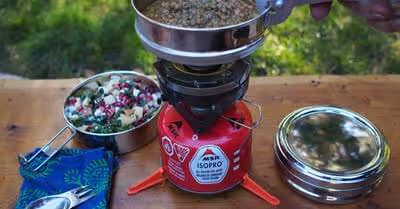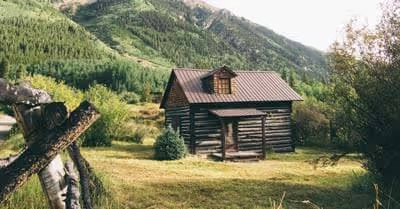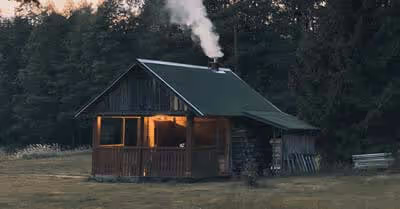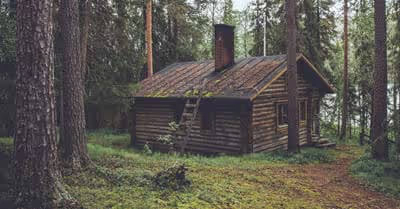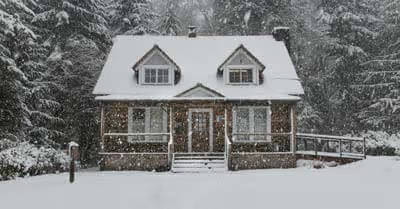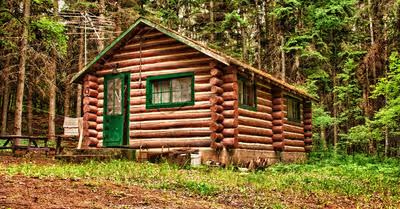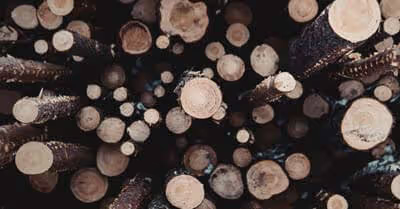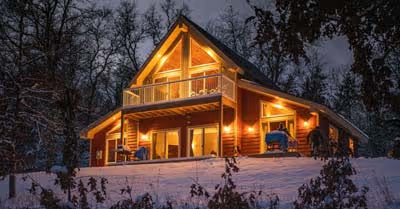Table of Contents
A strong structure is essential
Nothing is as crucial to how long a long cabin lasts than the strength of its structure. The structure is the logs and the chinking between them, the roof's main beams, and everything else that keeps the house standing. If the structure is weak, the cabin might develop serious problems after much less than a decade.
A cabin needs to be well built and built out of quality materials to last a long time. If the logs used to build the cabin are not of high quality, the house will fall apart sooner rather than later. Problems with how the walls and especially the roof are built can reduce the longevity of a cabin.
Make sure that the initial construction of the house is solid. If the initial construction is poor, it will be so much of a hassle to maintain it that it won't be worth saving. With good initial construction, maintenance will be cheaper and less time-consuming.
Doing a bit of maintenance now can save you from having to do a lot of maintenance later. If you do just a bit of work on your cabin once a year, you can keep it in good shape for a lot longer.
Use dry, high-quality logs
Choose your logs carefully, and dry them properly before you build your cabin. A cabin won't last as long if you build it with logs that are still a bit wet.
Some logs can shrink or expand if they are exposed to hot or cold temperatures. Choose your logs carefully, as if the logs change in size after you build your cabin, you will have major problems. If you treat your logs before you build your cabin, you can minimize these problems.
Build a roof to keep your logs dry
You should keep water away from your logs as much as possible. If your logs are exposed to water often, the logs will start to rot. Have a covering on your roof that keeps water away from the logs.
If you can keep the logs dry and do some periodic repairs on your cabin, there is no real limit to how long it might last. The oldest still-standing log house in the world is in New Jersey and was built in the 1600s. A log home usually doesn't last nearly that long, but it can last for the rest of your life if you maintain it.
Are log cabins popular?
Log cabins are beautiful structures that have been increasing in popularity over the last few decades. High housing costs drive many people out of cities, making log cabins more popular. If remote work remains common after 2020, this could create more interest in log homes also.
Are log cabins a good investment?
Yes, log cabins are a good investment for the people interested in them. You can save a fortune if you build a log cabin. While having a log cabin built for you is not cheap and building it yourself is not an easy task, it is still a way to own a home affordably.
Can steel siding help a log cabin last longer?
Yes, steel siding is a great choice. Some people may find that steel siding interferes with a cabin's rustic appeal, but for those who like or don't mind the appearance of steel siding, it is a good idea. Steel siding keeps water away from your logs and helps your cabin last longer.
If you want your cabin to last for more than 50 or more than 100 years, steel siding will help you. A cabin with steel siding may last more than a century.
Rotting and insects can destroy a cabin or make it need a lot of maintenance. With steel siding, the logs stay dry and invulnerable to insects. Another advantage of steel siding is that it makes a log home less vulnerable to fire.
What logs are best for building a log cabin that will last for a long time?
Whether you are using steel siding or not, building with the right kind of wood is important. The best trees for building log cabins may be cedar trees. Cedar trees are long enough and are sturdy and water-resistant.
Pine is very easy to find and cheap, and it makes a good building material as well, though it may need more maintenance than cedar does. Pine, especially white pine, is resistant to damage from insects.
Oak is also a great choice, but it is more expensive than pine, or even cedar is. If you can afford it, oak looks great and lasts a long time. Oak is also very easy to work with.
Other high quality but for most people prohibitively expensive trees are Walnut and Poplar. Unlike Cedar, Walnut and Poplar logs shrink a lot, so you have to shrink the logs before building with them. Despite this disadvantage, you can build a very durable home using these logs.
Another great choice that may be as good as cedar is redwood. Redwood is expensive, but it is both resistant to damage and hardly shrinks, making it comparable to cedar.
A lower quality tree is hemlock, which is not very durable and shrinks. Pine is a better choice if you are looking for a cheap tree, as at least pine does not shrink much.
Do log cabins have much resale value?
Yes, a well-built log home can sell for more than it cost to build it. There are no guarantees in real estate investments, but you have a reasonable chance of selling your cabin for a lot more than you spent on it if you decide you don't want it anymore.
Location is very important. If you build a log cabin in a spot ideal for vacationers, it may be worth a lot more in the future.
Some buyers prefer log cabins in popular locations; others want a cabin in a remote location. Look for a buyer that thinks your location is ideal, and you may be able to sell your cabin for a high price.
Size and quality matter
A larger cabin is, of course, worth more. The square footage has a huge effect on the price of the home. Log homes with wide-open spaces and large bedrooms are more valuable than log homes that feel crowded.
The appearance of the home also matters. A cabin that is not well insulated will not sell for much. Large windows that offer a beautiful view of nature are a selling point, and your cabin will usually sell for more if it is not too far from the nearest town.
You may also have to repair your cabin before you sell it. If the cabin is not in good repair, this may lower the cabin's value by more than the repairs' cost.
How can you keep your cabin's exterior looking new?
One of the best things you can do is build overhangs that are large enough. If the overhangs are too small, rainwater can drip down your walls and get the wood wet. Large overhangs are more important for log houses than for other types of homes, so make them a few feet long.
Take care of your gutters
Letting leaves pile up in your gutters is particularly bad if you have a log home, as the water can leak into and damage your home. Putting a cover on top of your gutters is a good idea. A cover can let the water through but keep the leaves out.
Sun exposure can damage your wood to some extent also. Ultraviolet light can slowly do damage. Even if your logs are not cedar, you might use cedar siding, as that can resist the sun.
Inspect your cabin periodically
When your cabin needs a bit of maintenance, do it soon to avoid worse problems. If you notice cracks in the logs, seal them. This simple maintenance work will prevent water from seeping into the logs and causing damage that is not easy to fix.
Siding may also rot and need to be replaced. The boards at the top near the rain gutters are the most likely to need replacing. Window frames may also need replacing if the wood softens over time.
Anyone who owns a log cabin should also spray it with a water-repelling substance. Once in a while, you will have to respray the house. It is crucial to spray the ends of your logs, as these absorb water the fastest.
Recent Articles



